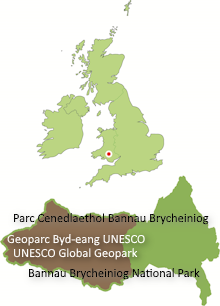(359-299 million years ago)
The big story . . .
During this period Britain lay more or less on the Equator and so enjoyed a tropical climate. As global sea levels rose at the start of this period, the former river plains were now flooded to form a shallow sea which extended across much of South Wales. The scene may have been similar to modern-day Florida and the Bahamas with abundant corals growing in warm seas in which brachiopods, a type of shellfish, also thrived.
In time these shallow seas were once again inundated with sand and mud brought down by rivers from the Caledonian Mountains to the north. Later the river deltas were colonised by plants and dense swampy forests grew across them.
Towards the end of the period another phase of mountain-building occurred – the ‘Variscan Orogeny’. This arose from the collision, to the south of our area, of the micro-continents of Armorica and Iberica with Laurussia. The major mountain range which resulted began to erode and shed sediments to the north. We see these sediments now as the Pennant Sandstones of the South Wales Coalfield.
The rock legacy . . .
Rocks from the Carboniferous period form spectacular landscapes throughout Britain and do not disappoint in Fforest Fawr Geopark.
For convenience, they can be divided into three layers, the lowermost – the Limestones – being the first to be formed, succeeded by the Marros Group, then the Coal Measures:
- South Wales Coal Measures
Up to 1200m thickness of mudstones and sandstones with coal seams. The Coal Measures were deposited during the Westphalian epoch. - Marros Group
Up to 130m thickness of mudstones & sandstones. The Marros Group was deposited during the Namurian epoch. These rocks were formerly known as the ‘Millstone Grit Series’. - Carboniferous Limestone Supergroup
Up to 180m thickness of limestones with some sandstone and shale. The Carboniferous Limestone was deposited during the Dinantian epoch.
Visit the Carboniferous Timechart.
What’s in a name?
The period is so named because of the large quantities of coal which were formed at that time (‘carboniferous’ = ‘coal-bearing’). Westphalia, Namur and Dinant are regions of western Germany and Belgium which have given their names to subdivisions of the Carboniferous period in the international geological timescale.



